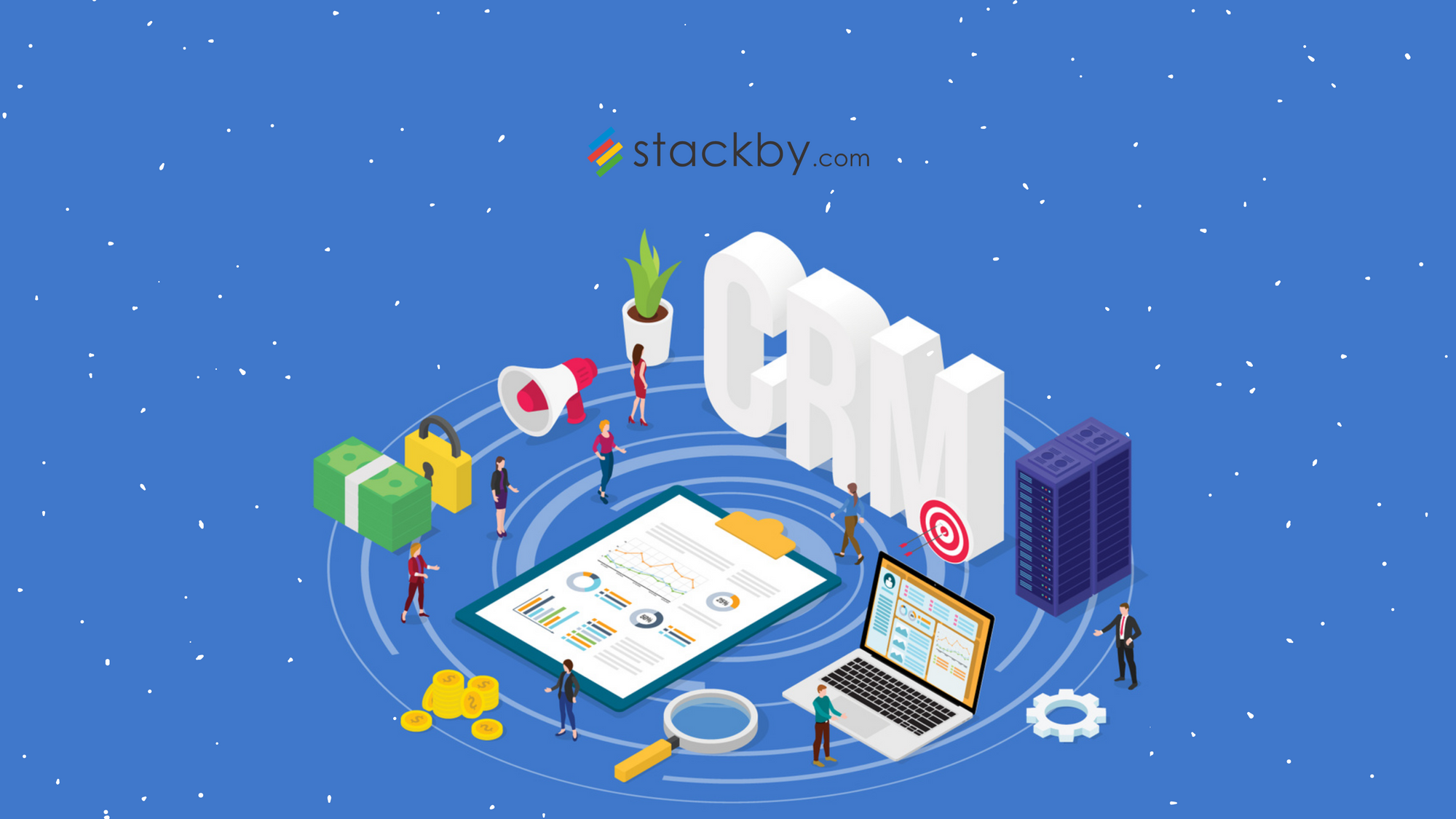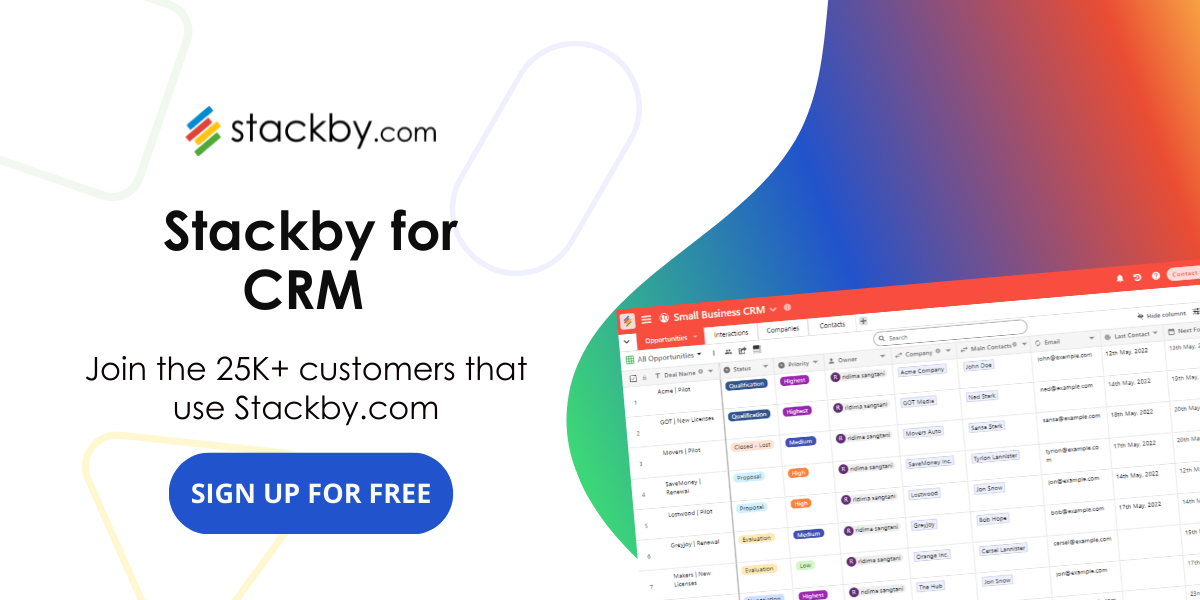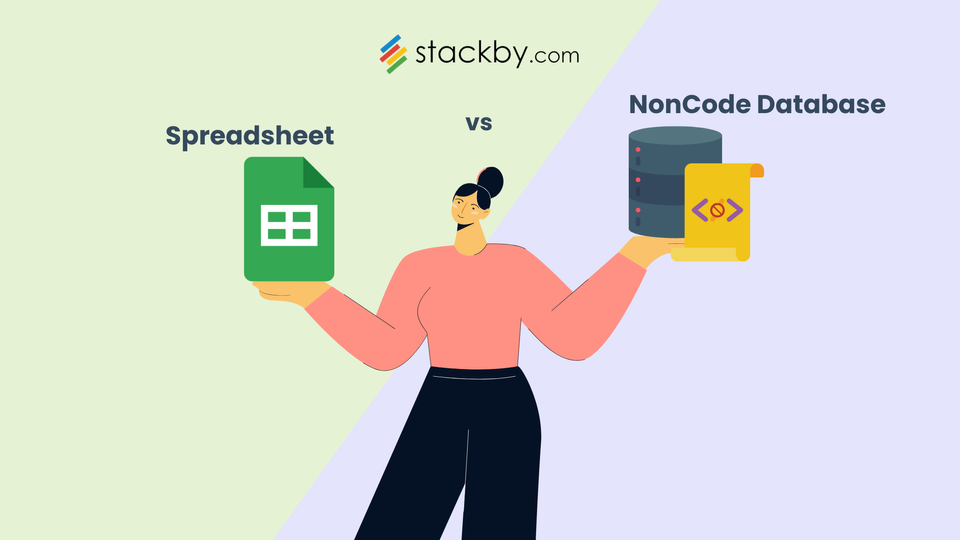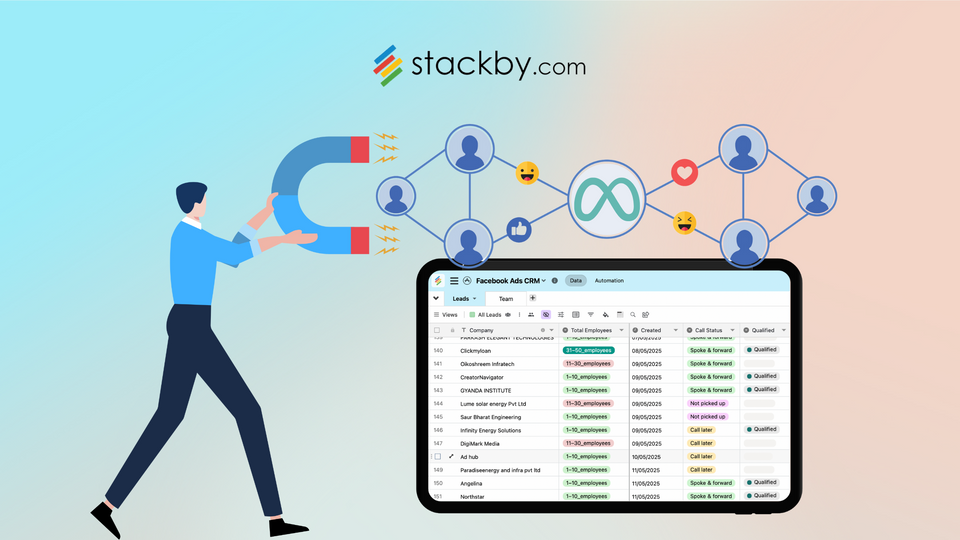What is CRM Database - A complete Guide [2026]
Curious about CRM databases? This complete 2026 guide covers everything you need to know! Learn how CRM systems help manage customer data, enhance relationships, and drive business success. Whether you're a small business or a large enterprise, this guide will help you master CRM databases.

Hey there, fellow business enthusiast! Ever feel like you're drowning in customer data, frantically scribbling notes on napkins, or worse, forgetting that VIP client's birthday? Well, buckle up, because we're about to dive into the world of CRM databases – your new best friend in the digital age.
Defining CRM Databases
A CRM (Customer Relationship Management) database is far more than just a digital rolodex. It's a sophisticated system that serves as the central hub for all your customer information. Think of it as the nervous system of your customer relations - collecting, processing, and distributing vital information across your entire organization.
At its core, a CRM database keeps track of:
- Customer profiles and contact information
- Detailed purchase history and preferences
- Interaction timelines across all channels (email, phone, social media, etc.)
- Personal details and preferences
- Sales opportunities and pipeline status
- Customer service issues and resolutions
But it doesn't stop there. A good CRM database transforms this raw data into actionable insights, helping you understand your customers on a deeper level and anticipate their needs.
The Critical Importance of CRM Databases in Modern Business

You might be wondering, "Do I really need a CRM database?" In today's competitive business environment, the answer is a resounding yes. Here's why:
- Enhanced Customer Recognition: Gone are the days of scrambling to remember a client's details before a meeting. With a CRM database, you have instant access to a customer's entire history with your company. This level of recognition makes customers feel valued and understood, fostering loyalty and repeat business.
- Improved Sales Performance: Equip your sales team with a CRM database, and watch their performance soar. They'll have insights into customer preferences, pain points, and buying patterns at their fingertips. This knowledge allows them to tailor their approach, address concerns proactively, and close deals more effectively.
- Targeted Marketing Efforts: Spray-and-pray marketing is a thing of the past. A CRM database allows you to segment your audience with surgical precision, ensuring your marketing messages reach the right people at the right time. The result? Higher engagement rates, better ROI on marketing spend, and more effective campaigns overall.
- Proactive Customer Service: Imagine resolving customer issues before they even become problems. With a CRM database, you can. By tracking customer interactions and preferences, you can anticipate needs, address concerns proactively, and provide a level of service that turns customers into brand advocates.
- Data-Driven Decision Making: In the age of big data, gut feelings no longer cut it. A CRM database provides you with hard data on customer behavior, sales trends, and market dynamics. This empowers you to make informed decisions that drive your business forward.

Types of CRM Databases: Choosing the Right Fit

Not all CRM databases are created equal. They come in different flavors, each designed to meet specific business needs. Let's explore the main types:
#1. Operational CRM
Operational CRM is all about streamlining your day-to-day customer-facing operations. It focuses on automating and improving customer-related business processes, including:
- Sales automation: Managing leads, tracking opportunities, and forecasting sales.
- Marketing automation: Handling email campaigns, lead scoring, and customer segmentation.
- Service automation: Managing customer support tickets, tracking service levels, and maintaining a knowledge base.
This type of CRM is ideal for businesses looking to enhance efficiency in their customer interactions and streamline their sales, marketing, and service processes.
#2. Analytical CRM
If you're a data enthusiast, Analytical CRM is your new best friend. This type specializes in mining your customer data for insights. It uses techniques like data warehousing, data mining, and online analytical processing (OLAP) to:
- Analyze customer behavior patterns
- Identify sales trends
- Measure the effectiveness of marketing campaigns
- Predict customer preferences and future behaviors
Analytical CRM is perfect for businesses that want to leverage their data for strategic decision-making and to gain a competitive edge through customer insights.
#3. Collaborative CRM
In today's interconnected business world, silos are the enemy of efficiency. Collaborative CRM breaks down these barriers by facilitating information sharing across all customer-facing departments. It ensures that whether a customer is talking to sales, marketing, or support, they receive a consistent and informed experience.
Key features include:
- Shared calendars and contact management
- Document sharing and collaborative workspaces
- Customer interaction tracking across all touchpoints
This type of CRM is ideal for businesses with complex customer journeys that span multiple departments or teams.
Implementing a CRM Database: A Strategic Approach

Now that you understand the importance and types of CRM databases, let's talk about implementation. Rolling out a CRM database is a significant undertaking, but with the right approach, it can be a smooth and rewarding process. Here's a step-by-step guide:
Step 1: Strategic Planning
Before you dive into the technical aspects, it's crucial to lay a solid foundation:
- Assemble a cross-functional team of stakeholders from sales, marketing, customer service, and IT.
- Clearly define your objectives. What do you want to achieve with your CRM database?
- Identify your key performance indicators (KPIs). How will you measure success?
- Assess your current processes and data. What's working? What isn't?
- Set a realistic budget and timeline for implementation.
Remember, a CRM database is a tool to serve your business goals, not the other way around. Ensure your CRM strategy aligns with your overall business objectives.
Step 2: Analysis and Design
With your strategy in place, it's time to get into the nitty-gritty:
- Evaluate your current data landscape. What data do you have? Where is it stored? How clean is it?
- Design your new CRM database structure. What fields do you need? How will data flow between different parts of the system?
- Choose your CRM software. Consider factors like scalability, ease of use, integration capabilities, and cost.
- Plan for data migration. How will you transfer your existing data into the new system?
This stage is all about creating a blueprint for your CRM database that meets your specific needs and sets you up for success.
Step 3: Implementation
Now comes the exciting part - bringing your CRM database to life:
- Start with a pilot program. Choose a small group or department to test the system before rolling it out company-wide.
- Provide thorough training. Your CRM database is only as good as the people using it.
- Migrate your data carefully. Ensure data integrity and cleanliness during the transfer process.
- Set up integrations with your other business systems (e.g., email, accounting software, etc.).
- Establish clear processes for data entry and management to maintain data quality.
Remember, patience is key. A phased implementation allows you to iron out any kinks before scaling up.
Step 4: Review and Optimization
Your CRM database journey doesn't end with implementation. Continuous improvement is crucial:
- Regularly review your KPIs to ensure you're meeting your objectives.
- Gather feedback from users and make adjustments as needed.
- Stay on top of system updates and new features offered by your CRM provider.
- Continuously clean and optimize your data to maintain its value.
- Look for new ways to leverage your CRM data to drive business growth.
Real-World CRM Success: A Case Study
To illustrate the transformative power of a well-implemented CRM database, let's look at a real-world example:
Age UK, the largest charity in the United Kingdom, faced a significant challenge. They had customer data scattered across 120 different sources, making it nearly impossible to get a clear picture of their clients and their needs.
By implementing a robust CRM database, Age UK was able to:
- Consolidate all their data into a single, unified system
- Gain a 360-degree view of their clients
- Personalize their services based on individual needs and preferences
- Improve the efficiency of their operations
- Enhance their fundraising efforts through better donor management
The result? Age UK can now provide more targeted, effective support to older people across the UK, all while operating more efficiently as an organization.
Maximizing Your CRM Database Effectiveness
Having a CRM database is just the start. To truly harness its power, consider these best practices:
- Establish Clear Data Governance: Create and enforce guidelines for data entry, management, and usage. This ensures your data remains clean, consistent, and reliable.
- Leverage Automation: Use automation tools to handle routine data tasks like data entry, lead scoring, and follow-up reminders. This frees up your team to focus on high-value activities that require a human touch.
- Develop Actionable Reporting: Work with your teams to create reports and dashboards that provide genuine, actionable insights. A beautiful report that doesn't drive decision-making is just digital wallpaper.
- Focus on Achievable Goals: Start with small, manageable objectives to build momentum and demonstrate value. As you achieve these goals, you can tackle more complex CRM initiatives.
- Encourage User Adoption: Your CRM database is only as good as the data it contains. Encourage consistent use by making the system user-friendly and demonstrating its value to individual team members.
- Integrate with Other Systems: Your CRM database shouldn't exist in isolation. Integrate it with your other business systems (e.g., marketing automation, customer service software) for a truly holistic view of your customers.
The Rise of Cloud-Based CRM Solutions
As we look to the future of CRM databases, one trend stands out: the move to the cloud. Cloud-based CRM solutions are becoming increasingly popular, and for good reason. They offer several key advantages:
- Accessibility: Access your CRM data from anywhere with an internet connection, enabling remote work and on-the-go customer management.
- Scalability: Easily scale your CRM capabilities up or down based on your business needs, without significant hardware investments.
- Automatic Updates: Enjoy the latest features and security updates without the need for manual installations.
- Cost-Effectiveness: Reduce upfront costs and shift to a predictable subscription model.
- Enhanced Collaboration: Cloud-based systems make it easier for teams to collaborate in real-time, regardless of their location.
While cloud-based solutions offer many benefits, it's important to consider factors like data security, compliance requirements, and internet reliability when making your decision.
Conclusion: Embracing the CRM Database Revolution
As we navigate the complex business landscape of 2024 and beyond, a well-implemented CRM database is no longer a luxury - it's a necessity. It's the key to truly understanding and serving your customers in a personalized, efficient manner.
Remember, implementing and maintaining a CRM database is not a one-time project, but an ongoing process. It requires consistent attention, adaptation, and optimization. However, the rewards - in terms of customer satisfaction, operational efficiency, and data-driven decision-making - are substantial.
Are you ready to elevate your customer relationships and drive your business forward? Your journey with CRM databases starts now. Embrace this powerful tool, and watch as it transforms your approach to customer management, propelling your business to new heights of success.
In the world of business, knowledge truly is power. And when it comes to knowing your customers, there's no more powerful tool than a well-utilized CRM database. So take the plunge, invest in your CRM capabilities, and prepare to revolutionize your customer relationships. The future of your business may just depend on it.



![13 Best Business Management Software for your Work [2026]](/blog/content/images/size/w960/2024/03/stackby-business-blog-image-1.jpg)
![10 Best Free Database Templates for Marketing Agencies in [2026]](/blog/content/images/size/w960/2024/03/stackby-Database-templates-for-marketing-agencies-1-blog-post-2.jpg)

